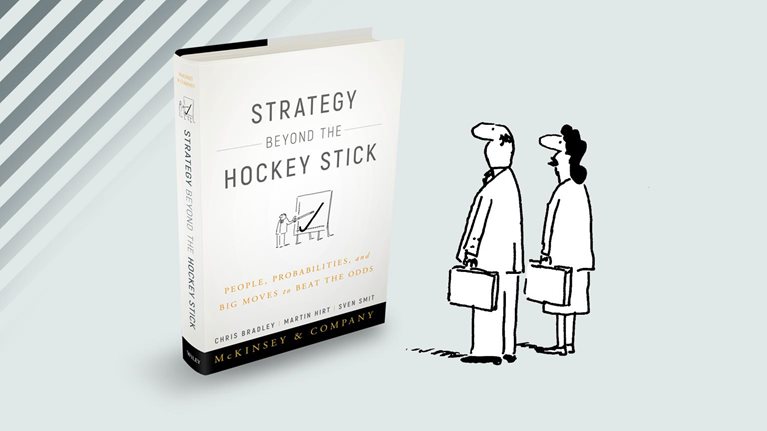The pace of change across the business landscape is unrelenting. Technological, economic, and political disruptions are requiring a rethink by most companies of where and how they compete, what organizational model they need to keep up, and where they must build capabilities. This issue of the Quarterly provides a road map for navigating many of these challenges.
The cover story, “Strategy to beat the odds,” is the culmination of a multiyear research effort by our Strategy Practice. In a nutshell, my colleagues Chris Bradley, Martin Hirt, and Sven Smit broke from the usual best-practice examples and frameworks that often characterize writing on strategy and instead developed a new set of strategic tools, based on data from thousands of companies.
The authors’ research shows how to boost the odds of achieving strategic breakthroughs by capitalizing on your endowment, riding the right trends, and making a few big moves. They also believe that when leaders have an empirically backed view of strategy, they stand a much better chance of overcoming the social dynamics that frequently conspire to produce inertia, gamesmanship, and risk aversion in the strategy room.
The article is drawn from their new book, Strategy Beyond the Hockey Stick, and it’s a must-read for any leader trying to formulate strategy that stays ahead of rapid change. One of the biggest strategic questions facing many companies is how to harness, rather than get blindsided by, digitization, an incredibly disruptive economic force. Another article in this issue, “Why digital strategies fail,” lays out five pitfalls that many leaders are stumbling into, and suggests how to sidestep them.
Strategy and organizational structure are inextricably related. In the 1962 classic Strategy and Structure, Professor Alfred Chandler argued that structure follows from strategy. Today’s environment appears to be inverting that logic. Aaron De Smet and Chris Gagnon assert in “Organizing for the age of urgency” that competing at the speed of digital calls for adaptive, fast-moving organizations that can respond quickly and flexibly to new opportunities and challenges as they arise. Often, that means moving decision making to the front lines, rather than capturing data, moving it up a hierarchical chain, centrally analyzing it, and sending guidance back. In a related article, Boeing’s senior vice president and CIO describes how his company is trying to do exactly that.
Leaders hoping to create the tech- and data-enabled organization of the future need more than data. They also must understand how increasingly powerful tools, particularly those enabled by artificial intelligence, are shaking up what companies can do with that data. In “What AI can and can’t do (yet) for your business,” Michael Chui, James Manyika, and Mehdi Miremadi provide a field guide on several promising developments poised to bend the trajectory of AI, enabling it to generate sharper insights, sometimes with less data than is necessary today.
As these articles suggest, the nature of functional business knowledge is changing: evergreen topics such as strategy and organization are colliding in unexpected ways with the forces of digital, big data, and artificial intelligence. Those collisions are creating new business opportunities, and they are also necessitating new organizational capabilities—starting at the top and moving all the way to the front lines. I hope this issue of the Quarterly helps you build the muscle you and your organization need.
Download the full issue of McKinsey Quarterly 2018 Number 1 (PDF–7MB).


